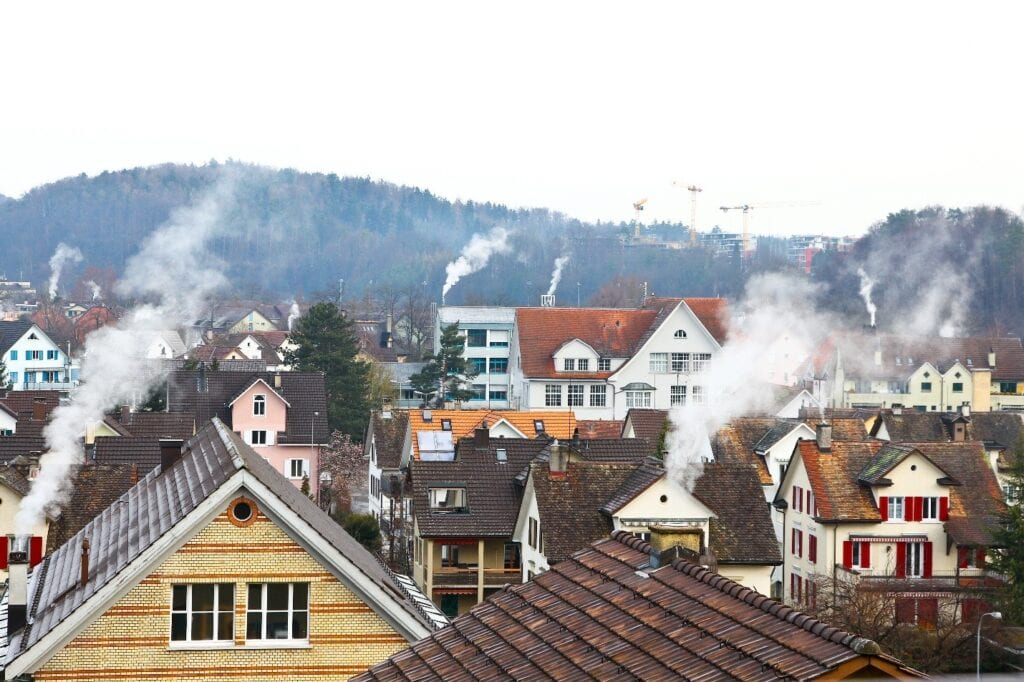Are you looking to add a new fireplace to your home or upgrade an existing one? If so, you’ve probably read about vent-free gas fireplaces, and you may also now be well-acquainted with the debate about whether or not they are safe. Vent-free fireplaces are advertised as being a “smokeless” and worry-free heat source that allows you to retain heat from burning gas instead of venting most of it away.
Sounds a little too good to be true, right? It is.
Here at LanChester Grill & Hearth, we always strongly caution our customers against installing these unvented, gas-burning fireplaces in their homes. We simply don’t believe the risks they present to your family’s health and safety are worth the cost. (And there are other big issues with these fireplaces, as well.)
Today, we’re highlighting our objections concerning vent-free fireplaces so all of our customers can make more informed purchasing decisions.
Vent-free fireplaces produce harmful by-products
While burning natural gas doesn’t produce the clouds of smoke that burning wood does, gas fires still produce by-products as they burn. Most of these byproducts are harmful chemical compounds you do not want in your home.
These include carbon dioxide, sulfur dioxide, and that now well-known “silent killer” gas, carbon monoxide (CO).
It’s true that carbon monoxide build-up in homes is a risk from burning any type of fuel, including gas, wood, oil, or coal, but the danger is usually caused by malfunctioning equipment or user error. With vent-free fireplaces, carbon monoxide is pushed into your living areas as part of regular operation, which we think is scary.
Even proponents of vent-free fireplaces advise owners to install carbon monoxide detectors throughout their homes, and especially near the fireplace. This suggests that there is a recognized safety issue that some people just choose to ignore or are not even aware of. Again, that’s scary.
Vent-free fireplaces can make you sick
We’re all aware of the potentially deadly consequences that carbon monoxide build-up in your home can have, but the other gases that vent-free fireplaces release as they burn can also make you and your family sick.
For example, sulfur dioxide is a respiratory irritant that causes symptoms like difficulty breathing, coughing, and wheezing. It’s particularly dangerous for sensitive groups like children and the elderly, and can cause serious complications for people living with asthma. The US Environmental Protection Agency considers sulfur dioxide a major air pollutant in the outdoor atmosphere – why would you want to purposefully introduce this harmful substance into your home?
Vent-free fireplaces vary wildly in quality
If you’ve been shopping for fireplaces recently, you’ve probably noticed vent-free gas log sets or fireplace setups for sale at the big box home improvement stores or online. The prices probably seem extremely attractive, too, but don’t be deceived – you must still factor in proper installation, and also realize that the quality of many direct-to-consumer fireplace components is severely lacking.
Additionally, these retailers likely will not tell you that your vent-free fireplace is not maintenance-free. These heating appliances require annual service to remain in proper working order, and ignoring this maintenance will cause problems in the long run. Remember that vent-free fireplaces already release harmful gases into your home, and a malfunctioning vent-free fireplace may do so at even higher rates.
Consulting the knowledge of a reputable hearth and fireplace specialty retailer is the best way to assure that you understand what your fireplace requires and to guarantee that the components you’re interested in are of the highest quality.
Vent-free fireplaces can damage your home
In addition to carbon monoxide and other harmful pollutants, vent-free fireplaces release water vapor into your home. Burning gas naturally produces water vapor, but this is typically vented outside during normal operation of conventional gas fireplaces.
You will know that your vent-free fireplace is causing problems if you notice wallpaper beginning to peel or other signs of water damage on interior finishes. (Think about how surfaces in your bathroom react to the steam from hot showers – water vapor from vent-free fireplaces has the same effect in your living room or other spaces close to the fireplace.)
Unfortunately, not all water damage is visible, of course. Vent-free fireplaces, especially those that have been improperly installed, can release water vapor within walls or cause condensation to form on other structural components of your home. That’s right; your “affordable” vent-free fireplace may actually cost you quite a lot in repairing structural damage from water vapor.
Don’t be fooled by low installation and operating costs used to market vent-free fireplaces. There are better options available even if you do not have an existing fireplace or chimney in your house today. Give us a call with your questions, or stop by our showroom in Gap, PA to talk with the fireplace experts.


